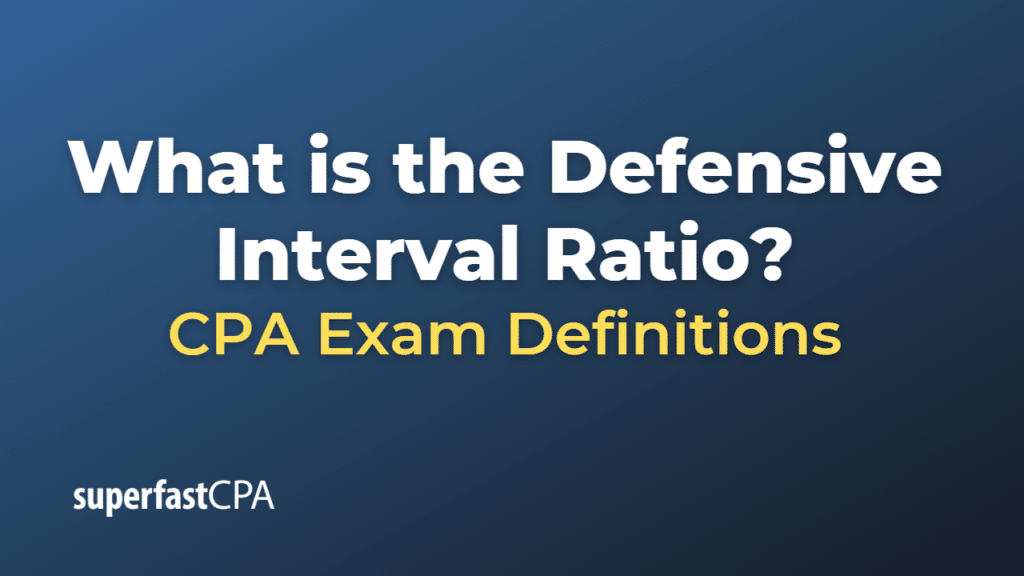Defensive Interval Ratio
The Defensive Interval Ratio (DIR) is a financial metric used to estimate the number of days that a company can continue to operate without needing to access additional financing or sales income. It measures the company’s liquidity, or its ability to cover daily cash expenses with current, liquid assets.
The Defensive Interval Ratio is calculated using the following formula:
\(\text{Defensive Interval Ratio} = \frac{\text{Current Liquid Assets}}{\text{Daily Operational Expenses}} \)
Here:
- Current Liquid Assets typically include cash, marketable securities, and accounts receivable.
- Daily Operational Expenses are calculated by taking the company’s annual operating expenses, subtracting non-cash expenses such as depreciation, and then dividing by 365 (to get a daily average).
A higher DIR indicates that a company can operate longer using just its liquid assets, which suggests better short-term financial stability. A lower DIR might indicate potential liquidity problems, especially if unexpected expenses arise or if revenues suddenly fall.
However, like all financial ratios, the DIR should not be used in isolation. It should be considered alongside other financial metrics and the broader context of the company’s industry, size, and business model.
Example of the Defensive Interval Ratio
Let’s take a hypothetical example of Company ABC to illustrate the Defensive Interval Ratio:
Assume Company ABC has the following financial information (in thousands):
- Cash: $500
- Marketable securities: $300
- Accounts receivable: $200
- Annual operating expenses: $1,500
- Annual non-cash expenses (depreciation): $300
First, we need to calculate the current liquid assets by adding cash, marketable securities, and accounts receivable:
Current Liquid Assets = $500 + $300 + $200 = $1,000
Next, we need to calculate the daily operational expenses. We start by subtracting the non-cash expenses from the annual operating expenses, and then divide by 365:
\(\text{Daily Operational Expenses} = \frac{\$1,500 – \$300}{365} = \frac{\$1,200}{365} \approx \$3.29 \)
Now, we can calculate the Defensive Interval Ratio:
\(\text{Defensive Interval Ratio} = \frac{\text{Current Liquid Assets}}{\text{Daily Operational Expenses}} \)
\(\text{Defensive Interval Ratio} = \frac{\$1,000}{\$3.29} \approx 304 \)
Company ABC’s Defensive Interval Ratio is approximately 304, which means that it can continue to operate for about 304 days using only its current liquid assets without needing additional financing or sales income. This suggests a relatively strong short-term liquidity position for the company. However, it’s important to compare this ratio with industry benchmarks and consider other financial metrics to get a more comprehensive understanding of the company’s financial health.












